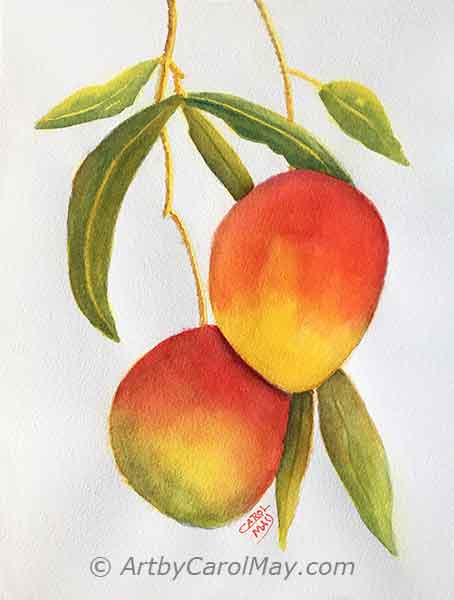- Home
- Color Wheel
Using the Artist Color Wheel: Essential Color Theory for Every Artist
The artist color wheel is an essential tool for both budding and seasoned artists.
It sparks creativity and it's our guide for choosing colors.
Imagine if we lived like in a black and white movie, that would be terrible! Color brings joy and expression into our artwork.
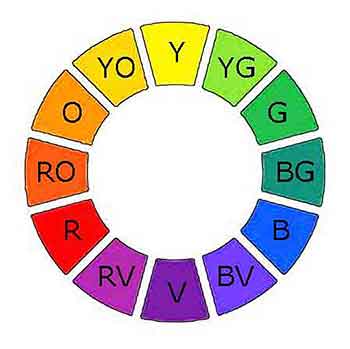 The Color Wheel
The Color Wheel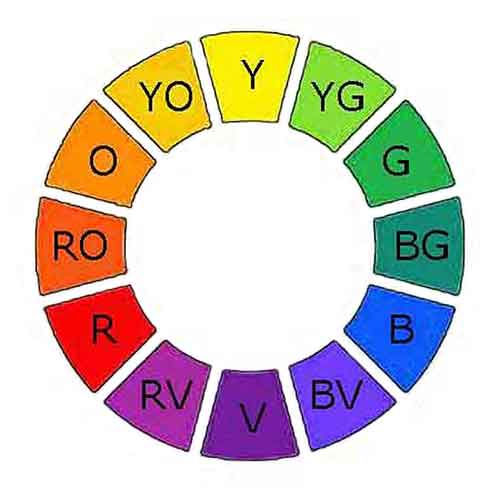 The Color Wheel
The Color WheelThe Artist Color Wheel
On this page we'll explore: what is color, where the color wheel came from, what's in it and practical tips on how to use color for painting art.
What Is the Artist Color Wheel?
The color wheel is our tool for creative painting.
It provides the foundation of color theory knowledge to confidently start using and experimenting with color.
Where did the color wheel come from?
The renowned physicist Isaac Newton gave us the color wheel back in the
1600s.
He noticed when light goes through a prism, it divides into the 7 rainbow colors; red, orange, yellow, green, blue, indigo and purple.
The modern artist color wheel excludes indigo and uses versions of the other six rainbow colors.
What Exactly Is Color: What Do We See?
Color is the artist's wonderful tool for self-expression.
When light shines on an object some of the light rays are absorbed by the object. Other rays bounce back off the object.
We see the light rays bouncing up off an object, that's the color of the object. For example, a green object bounces green light rays and absorbs the other colors.
The Primary Colors
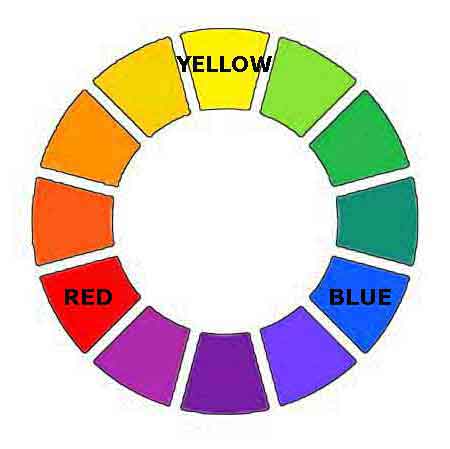 Primary Colors
Primary ColorsThe artist color wheel
contains twelve colors.
It is based on the primary colors, yellow, red and blue.
All other colors on the wheel are variations of the three primary colors - a fundamental principle of color theory for artists.
Red, yellow and blue, the primary colors cannot be mixed from any other colors.
The art paint colors closest to the primaries are:
- Cadmium Yellow Light
- Permanent Rose
- Phthalo Blue
Phthalo Blue is a very strong, staining color. Consequently, many artists use Ultramarine Blue instead.
We can mix and paint realistic skin tones with the primary colors.
The Secondary Colors
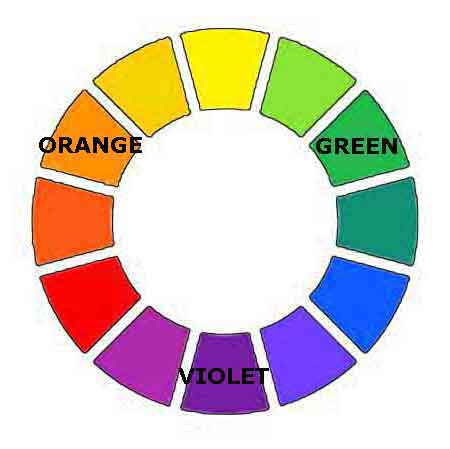 Secondary Colors
Secondary ColorsSecondary colors are a combination of two primaries. For example, yellow and red make orange.
The combination of yellow and blue make green.
Blue and red make purple, it may also be called violet.
The secondary colors can have some variation. It depends on exactly which yellow, red or blue were used to make the secondary color.
For example: We can get different greens by using various blue colors.
Phthalo Blue and yellow make bright greens. Ultramarine Blue and yellow create more subdued greens.
What Are Tertiary Colors?
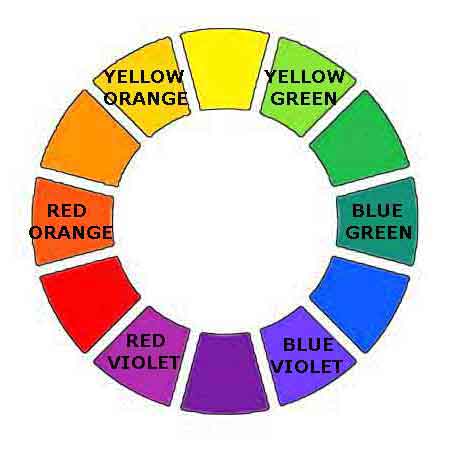 Tertiary Colors
Tertiary ColorsIntermediate colors are called tertiaries. We get them by combining a primary color and a secondary color next to it on the color wheel.
For example, combining primary yellow with the secondary color green results in a yellow-green.
Different amounts of yellow or green will give us many variations of the yellow-green.
If we go to the other side of yellow and combine it with the secondary color orange, we get yellow-orange.
The tertiary colors are; yellow-green, yellow-orange, red-orange, red-violet, blue-violet and blue-green.
Practical Tips Using the Artist Color Wheel
Artists use their knowledge of the color wheel to plan and paint their creations.
What Are Warm and Cool Colors?
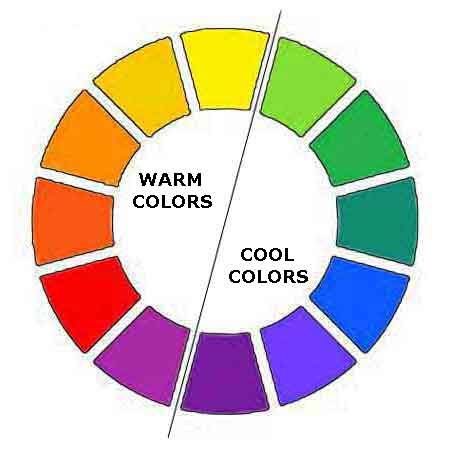
Artists often talk about color temperature, warm and cool colors. What are they?
The color wheel shows the warm colors and cool colors.
Red, orange and yellow are considered warm colors.
When warm colors are used in a painting, they appear to advance forward in the painting.
Blue, green and violet are usually considered cool colors.
Basically, any color containing blue is considered cool.
When cool colors are used in a painting, they seem to recede into the distance.
Understanding how warm and cool colors make clean or muddy colors.
Wise Artists Use the Meaning of Colors
Different colors can convey emotions, symbolize different things, influence the perception and impact of the art piece.
Warm colors like yellow and orange generally are happy energetic colors. Cool colors feel calm and peaceful.
But colors can have multiple meanings and emotions, such as red. It's considered a romantic color. That's why men give their ladies red roses. But it may also portray anger or rage.
Green can be associated with nature or money. But sometimes people may be green with envy.
Explore more about color symbolism and how to use it in our artwork.
Complementary Colors
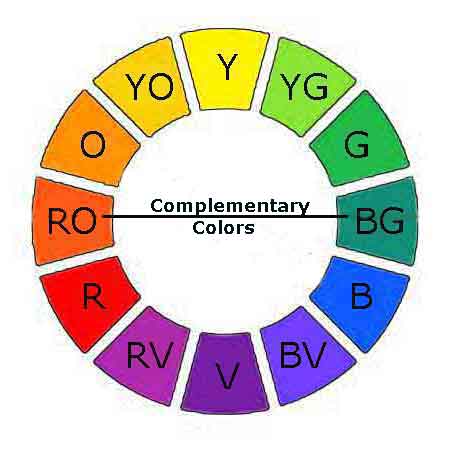 Complementary colors are opposite each other.
Complementary colors are opposite each other.The colors directly across from each other on the color wheel are complements of each other.
We can look anywhere around the color wheel to find complements, such as orange and blue, red and green, yellow and violet, etc.
Complements are contrasting values: One complement is lighter, such as the orange. The color across from on it on the color wheel will always be darker, such as the blue.
Complements are opposing temperatures: One color is warm and the opposite color will be cool.
Complements neutralize each other: We can cool or warm a color with its compliment. We may also neutralize the intensity of the color with its complement. Complementary colors are used for mixing black, brown and grey colors.
The Value of Colors
Every color is a different value, meaning it's lighter or darker than other colors.
 Colors have values.
Colors have values.There are two ways to see the value of a color.
We may turn the image into grayscale like the image above. This reveals:
- Yellow is the lightest color value.
- Violet is the darkest true color.
- Black is not actually a color; it's the absence of light.
Or we can look at values while we're painting. When we squint or lower our eyelids, this dulls the colors, so we are able to judge their values.
Values are so important for the successful paintings. Value contrast is what makes exciting paintings.
How to Use Color in Our Paintings
Let's look at how to use complements and warm and cool colors in our paintings.
Using Color to Create Forms
- Warm colors advance: Paint the part of an object that is closer to the viewer with
warmer colors.
- Cool colors recede: Paint the parts of an object turning away from the viewer with cooler colors.
Cooler and darker colors on the edge of the mangoes show them turning away from our view.
If the edge has bright light shining on it, we won't paint it darker. But we would still paint it cooler to show it turning away.
But you may say, yellow, orange and red are all warm colors. You are correct.
Yellow is the warmest color. The less yellow in a color, the cooler it gets.
Because orange contains less yellow, it is cooler than primary yellow. Red is a warm color, but it is cooler than orange and much cooler than yellow.
How Do We Create Distance in Our Paintings?
How can we paint the
illusion of distance and depth on our two-dimensional painting surface?
First, we need to understand aerial perspective. Colors get lighter and cooler, when they are viewed from the distance. This is because particles of dust and moisture in the air block the view of things, so they look lighter. This phenomenon is called aerial or atmospheric perspective.
Yellow, our warmest color starts disappearing in the distance and cool blue takes over.
 Colors are lighter and cooler in the distance.
Colors are lighter and cooler in the distance.The landscape painting above used three things to create the illusion of distant, aerial perspective.
- Distant colors are lighter and less saturated: The distant mountain colors are painted lighter.
- Cool, bluer colors recede: Adding blue moved the mountains into the distance.
- Warm colors advance: The saturated, warm colors in the foreground bring them forward.
Using Our Color Wheel Knowledge
Let's look at another example of using color in our paintings.
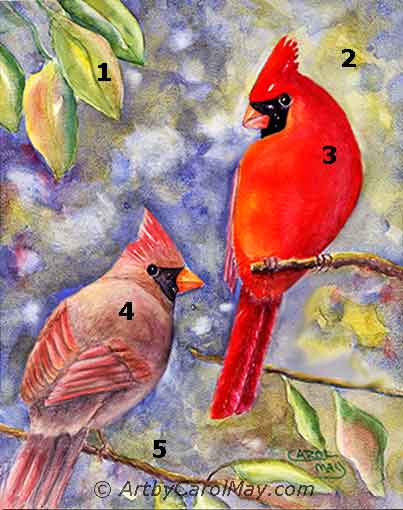
- Warm vs. Cool: The warm colored leaves pull forward from the cool blue background.
- Complementary Colors: The red bird stands out against the complementary greens in the background leaves.
- Creating Forms: The right side of the bird gets darker and bluer to make his body turn away. The left side of its body is warmed with yellow to make it come forward.
- Neutralizing Colors: The female bird colors were dulled by mixing them with their complementary colors.
The top of her body comes forward from her neck because it is lighter and warmer than the neck. - Background vs. Foreground: Once again the bluer, lighter colors move back. The warm colors on the branch move it into the foreground.
Essential Color Palette for Artists
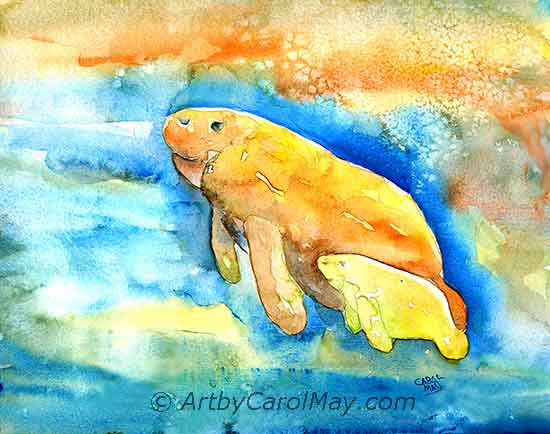 A few colors can make great paintings.
A few colors can make great paintings.We refer to the color wheel to decide which colors to keep on hand.
A limited palette of the primary colors is a good choice for any artist, especially the beginners.
We can never go wrong with:
- Cadmium Yellow Light
- Cadmium Red Medium or Permanent Rose
- Ultramarine Blue and white
We can mix all the colors of the rainbow. There is no need purchase black because it's so easy to mix black, brown and grey.
An expanded palette makes mixing colors quicker.
It would include a warm and cool version of each of the six basic colors of the artist color wheel; yellow, orange, red, violet, blue and green.
See the recommended 12 color palette - to ensure you're working with quality pigments that mix pleasing colors.
Choosing Your Artist Color Wheel
Understanding color theory is important, but having a color wheel tool makes painting easier. Let's explore physical and digital color wheels for the artist.
Physical Color Wheels
- Pocket Wheels: 5-6" Perfect for painting away from home, - $10.
- Studio Wheels: 9.25" The artist's standard size, clear color relationships and mixing guides. $7-$15.
- Professional Wheels: Have multiple layers with tints, shades, and color schemes. $20-$45.
Best for beginners: Start with a 9.25" artist color wheel - it's large enough to see the color relationships clearly.
Digital Color Wheel Tools
- Online Tools: Canva Color Wheel, Adobe Color - free and accessible anywhere.
- Mobile Apps: Color Wheel Pro, Painter's Companion - typically $2-$10.
- Software Integration: Built into Photoshop, Procreate, and most digital art programs.
Best for digital artists: Use your software's built-in wheel, along with a physical wheel for reference.
What to Look for In a Quality Artist Color Wheel
- Clear primary, secondary, and tertiary color divisions
- Tint and shade examples on the reverse side
- Color mixing guide or formulas
- Durable construction - laminated or heavy card-stock
- Gray scale value finder, optional
Frequently Asked Questions About the Color Wheel
What Is an Artist Color Wheel Used For?
What Is an Artist Color Wheel Used For?
An artist color wheel is used for understanding color relationships, mixing colors accurately, creating color harmonies, and selecting color schemes for paintings.
It shows the relationships between the primary colors, secondary colors, and tertiary colors.
Do I Need a Physical Color Wheel or Can I Use a Digital One?
Do I Need a Physical Color Wheel or Can I Use a Digital One?
There is an advantage to both. Physical color wheels are portable they don't need power. Digital color wheels have interactive features, and they work with digital art software.
Many artists use both: a physical wheel for reference and planning, and digital tools for actual color selection.
How Is an Artist Color Wheel Different From Other Color Wheels?
How Is an Artist Color Wheel Different From Other Color Wheels?
The artist color wheel uses Red, Yellow & Blue, RYB. It's great for mixing physical paint colors and understanding color theory.
Digital color wheels often use Red, Green & Blue, RGB. Commercial printing companies use Cyan, Magenta, Yellow & Black, CMYK.
Color Theory: Complete Artist's Guide
The color wheel is a super tool for understanding color. Expand your skills and knowledge by visiting additional color pages:
Color Mixing
How to Mix Paint
Colors - Step-by-step techniques for mixing any color you
need, including blacks, browns, and grays mentioned in this
guide.
Mix and Paint Skin Colors - The art of mixing realistic skin
tones using your color wheel knowledge.
Understanding Color Bias - Why do some colors lean warm or cool? The key to mixing clean, clear colors.
Best Paint for Artists - Choose quality paints that mix true to color wheel principles.
Color Strategy & Design
Color Schemes in
Art - Beyond complementary: explore triadic, analogous, and
split-complement schemes.
Choose Colors for a
Painting - Strategic color selection for your individual artwork.
Meaning of Color - Use color psychology and symbolism for expressive artwork.
